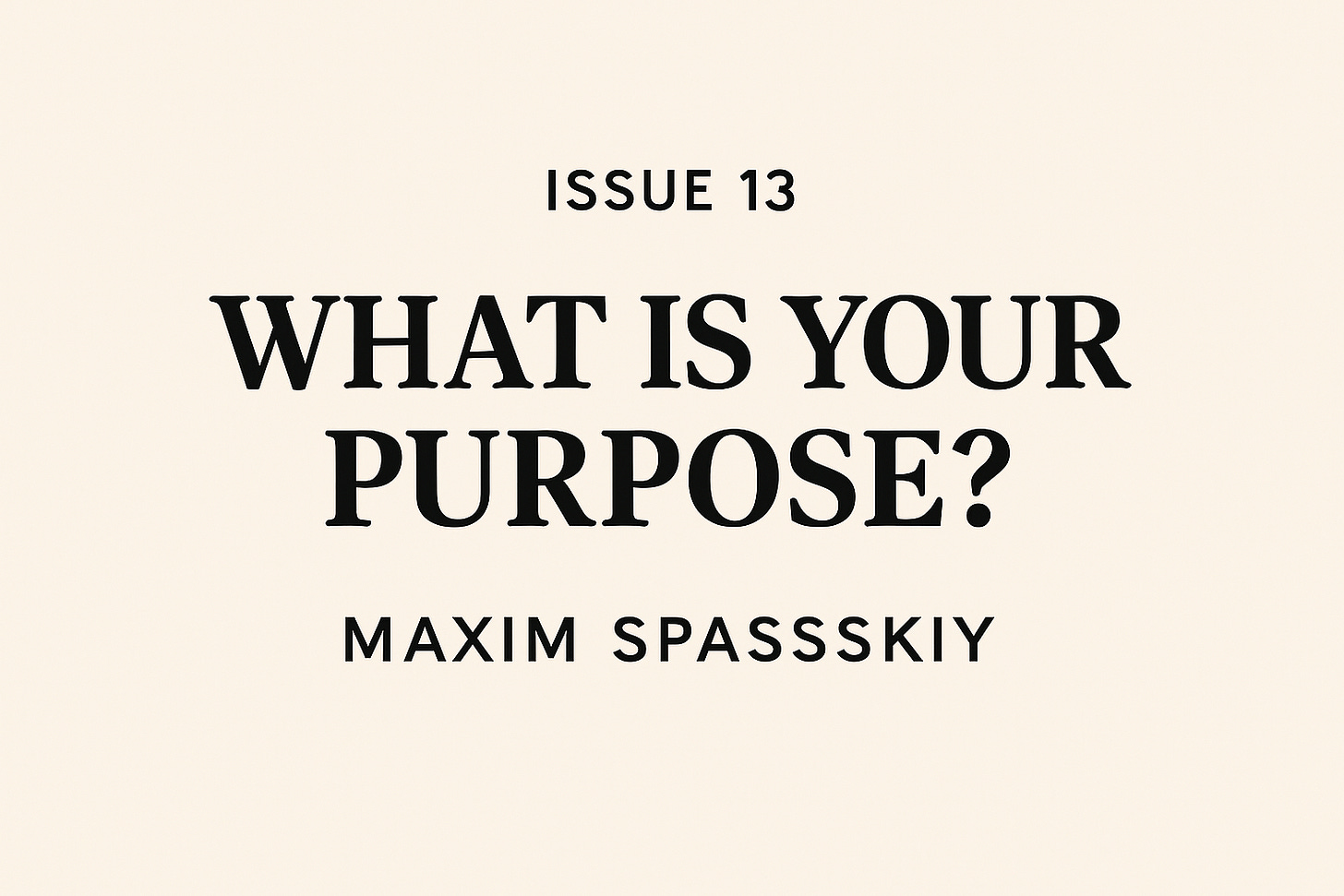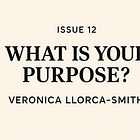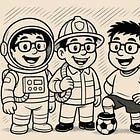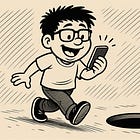What Is Your Purpose? — Issue #13: Maxim Spasskiy
When your plans fall like a house of cards
Hi community!
Thanks again for joining this new edition of What Is Your Purpose?, our biweekly series here at Self Disciplined, where we invite authors from all over to share their stories of purpose: what drives them, why they do what they do, and what they’ve learned along the way.
Each edition gives us a glimpse into their journeys: not just the results, but the process, so we can bring some of their wisdom into our own lives.
This week’s issue is a special one for me.
When I started my writing journey, a little over a year ago now, I had to learn everything from scratch: how to reach more people, how to find my voice, and how to grow as a creator (if I can even call myself that). Along the way, I met Maxim, another writer who’s been sharing his work on Substack and Medium for some time.
We first connected because our themes overlap.
My work often explores discipline, and his does too, but through the lens of writing itself: how to write with intention, how to find your authentic voice, and how to stay consistent through the creative process.
🛑 Before We Continue
Let me take a second to share some reminders.
👉 Check out my book campaign!
I’m writing a book to spread the word on Adaptable Discipline, and I need your help. I created a campaign in Publishizer to bring visibility to publishers. And the best way to do that is through pre-orders.
Check it out and help me by pre-ordering the book or spreading the word.
👉 Don’t forget to join our Disciplined Circle!
For $7.99 a month (or $79.99 a year) you can have access to all the paid companions available, with guidance on how to bring these reflections to action.
That common thread, discipline, led to more conversations between us. And when I learned about his story, I knew I wanted to bring it here. It’s one that I think many of you, especially those who write or create, will deeply relate to.
Without giving too much away, his experience touches on something that could happen to any of us. It’s about plans that shift, expectations that collapse, and what it really takes to rebuild from that.
is the author and founder of the newsletter Writing Secrets, and today, he’s here to share his story with us.So without further ado, I’ll let him take the mic and walk us through it.
At 7 a.m. on June 25th, I was writing an article when a notification appeared, stating my first book was live on Amazon.
It was my dream to write and publish a book for more than 15 years.
This dream came true in June 2025.
6 months earlier, I faced the biggest obstacle on my writing journey. Never expected it. This obstacle nearly made me quit.
Instead, I achieved one of my life’s dreams and found my purpose.
Want to Know My Story?
I started writing on Medium in 2023 alongside my 9-5 job.
My writing purpose back then was to create an additional income stream by doing the thing I enjoyed.
Like most new writers, I started from 0. What could go wrong when you start so low?
Everything, as I quickly discovered.
The first 8 months of writing online were hard.
I felt like I was writing in a void, and nobody cared. The reader was as rare as a magical dragon on the streets of New York at noon. My writing progress was terrible.
But I refused to give up.
I began to build my writing habit by gradually going from publishing once a week to five times per week.
I focused on improving my writing craft and developing tools that can help me write more easily, produce more content, and grow faster.
It started to pay off.
I grew to 1,000 followers and crossed $100 in earnings from writing in December 2024.
By the end of the year, my writing seemed to be in good shape.
I had big plans for 2025. I planned to publish 5-6 articles per week. I wanted to grow to 3,000 followers on Medium and increase my writing earnings to $500/month.
The Thing That Ruined Everything
The New Year has come.
And then… it happened.
One day, I woke up to see that Medium had destroyed all my plans. They cut my earnings by 10 times.
Just like that.
I made only $10 in January 2025.
I was crushed, not just disappointed, but hollowed out.
It felt like something squeezed my chest until my breath fizzed away. All my plans I had mapped on sticky notes and Google Docs crumbled like a house of cards. Everything I had been building for 1.5 years collapsed overnight. My coffee went cold on the table while I was staring at the wall, not knowing what to do.
Different questions occupied my mind:
What’s next?
Should I stay on Medium?
Should I start to write somewhere else?
And one more thought came more and more often:
Maybe writing is not for me?
But It Was Not The End
A week later, I decided to find inspiration from the successful people of the world.
I researched 10 of them and their life stories.
I spotted a pattern. It doesn’t matter the area where they succeeded, it could be business, tech, or science. The pattern was the same.
They succeeded because they were creators.
Each and every one of them created something. Something meaningful. That was the secret of their success.
I applied it to writing.
It revealed that before I had focused on the wrong thing. My main priority was content generation. Fairly said, that’s what Medium paid me for. And I showed up every weekday for it. Like a robot.
It never should have been my focus in the first place.
I discovered that you need to become a creator, not a content-generating machine, if you want to succeed in writing.
Medium made me the biggest favor by cutting my earnings by 10 times. It freed me from the endless circle of content recycling. Gave me the chance to transform my approach to writing.
It also helped me understand that my purpose was wrong.
I began to focus on creating meaningful, valuable, and useful things.
Things that can inspire and help others.
Writing online is a brutal beast that destroys most people. I realized this from my own experience. And that’s when I discovered my purpose.
My purpose is to create my own path for writing success, lead the way by example, and share with other writers what worked for me.
This is why I started my Substack community “Writing Secrets” in February 2025. Its main focus is to help writers write and make money online. Because I know how hard it is.
Then I launched two digital products and two services for writers.
I published my first book on Amazon in June 2025. That’s how my dream came true. Holding the book you published in your own hands is an incomparable feeling.
Today, I have a growing writing business with 5 income streams and 3,500 followers across all platforms, but it all started with the refusal to give up when reality hits, self-discipline to keep going, and curiosity to discover new hidden paths.
Writing Secrets community is created to help you write and make money online.
Thank you, Maxim, for sharing your story.
It’s never easy to talk about moments that, at the time, felt like failure. Most people only share the polished version of success, the part where everything suddenly works out.
But Maxim showed us the process. The messy middle.
In our previous issue,
spoke about navigating uncertainty and finding opportunity in what life handed her. Maxim’s story echoes that, but adds something new: he had a plan. Everything lined up for success.Success under the right conditions.
We all make those assumptions.
If everything goes well, I’ll do this. If not, I’ll fall back on Plan B.
But sometimes life doesn’t care about our alphabet of plans.
Sometimes everything changes overnight.
That’s where resilience comes in.
Resilience is a muscle, just like self-awareness1. Both depend on how our brain learns and adapts through neuroplasticity — its ability to rewire itself with practice2. The more we exercise resilience, the stronger those neural pathways become3. Ignore them, and other ones take over4. The good news is that it’s never too late to train them again56.
Resilience, to me, is the ability to bend without breaking. In discipline, it’s the ability to come back after life pulls you off course. To face what’s unpredictable without losing your rhythm.
Think of earthquake-proof architecture. In Chile, where I come from and where earthquakes are frequent, buildings aren’t made to stay rigid; they’re made to move with the ground. They bend and dissipate energy, minimizing damage and preventing collapse so people can get out safely and the structure can be repaired.
The priority is clear: protect life, accept repairable damage.
That’s what resilience looks like in us too: systems, routines, and habits that can flex with the tremors of life and return to center when things calm down.
Protect life. Accept repairable damage.
When life shakes us, our decision-making center, the prefrontal cortex, often gets hijacked by the amygdala, the part of the brain that panics and seeks safety. That’s why giving up can feel like the most logical choice.
Maxim did the harder thing. He took the uncertain path.
He felt what he felt but stayed aware enough to make decisions aligned with purpose, not fear.
That’s resilience in action.
It starts with awareness.
Feel what you feel; it’s okay.
Then look at your options. Engage the part of you that decides, not the one that reacts.
And when you can, lean into uncertainty. If your purpose is clear, it will always find a way to surface, maybe not how you expected, but exactly when you need it.
Maxim’s dream became a byproduct of that process.
A byproduct of finding his purpose.
In tomorrow’s Paid Companion, we’ll go deeper into this idea, exploring practical strategies to build resilience in our everyday lives so we don’t have to wait until life pulls us off course to develop it. We’ll look at how to train it intentionally, one small decision at a time.
Thank you for reading and for supporting this series.
If this story resonated, share it or leave a like; it helps these reflections reach more people.
Have a good weekend!
✨ Ideas Worth Exploring
If this piece resonated, here are a few more that go hand-in-hand.
Enjoying this? Support the mission.
I write Self-Disciplined to help more people build real, lasting discipline — without burnout. If my work has helped you, consider supporting it with a coffee or becoming a member.
Leppin, A. L., Bora, P. R., Tilburt, J. C., Gionfriddo, M. R., Zeballos-Palacios, C., Dulohery, M. M., Sood, A., & Erwin, P. J. (2014). The efficacy of resiliency training programs: A systematic review and meta-analysis of randomized trials. PLOS ONE, 9(10), e111420. https://doi.org/10.1371/journal.pone.0111420
Kleim, J. A., & Jones, T. A. (2008). Principles of experience-dependent neural plasticity: Implications for rehabilitation after brain damage. Journal of Speech, Language, and Hearing Research, 51(1), S225–S239. https://doi.org/10.1044/1092-4388(2008/018)
Draganski, B., Gaser, C., Busch, V., Schuierer, G., Bogdahn, U., & May, A. (2004). Neuroplasticity: Changes in grey matter induced by training. Nature, 427(6972), 311–312. https://doi.org/10.1038/427311a
Allred, R. P., Maldonado, M. A., Hsu Andrei, A., & Jones, T. A. (2014). Use it and/or lose it—Experience effects on brain remodeling across time after stroke. Frontiers in Human Neuroscience, 8, 379. https://doi.org/10.3389/fnhum.2014.00379
Woollett, K., & Maguire, E. A. (2011). Acquiring “the Knowledge” of London’s layout drives structural brain changes. Current Biology, 21(24), 2109–2114. https://doi.org/10.1016/j.cub.2011.11.018
Hölzel, B. K., Carmody, J., Vangel, M., Congleton, C., Yerramsetti, S. M., Gard, T., & Lazar, S. W. (2011). Mindfulness practice leads to increases in regional brain gray matter density. Psychiatry Research: Neuroimaging, 191(1), 36–43. https://doi.org/10.1016/j.pscychresns.2010.08.006









Camilo, my friend, thank you for this wonderful collaboration!
It's great to pause for a moment and think about our purpose.
Thanks!
💪🏿👌🏽😃